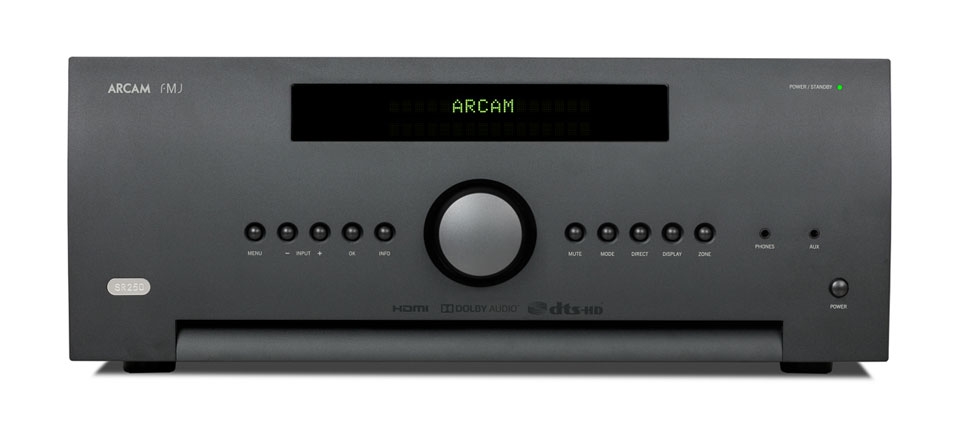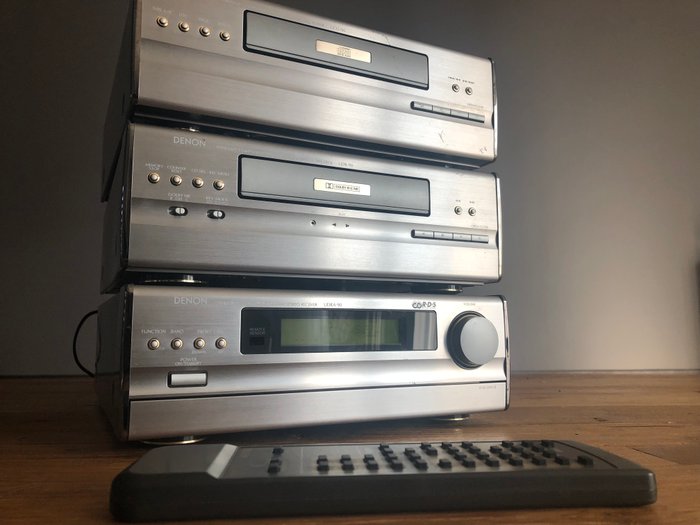Remember the 1970s, when the stereo receiver was at its pinnacle? Of course, the breed grew to become multichannel in the 1990s, and it’s now difficult to find one that doesn’t contain at least seven channels. So it was with great interest that I stumbled across Arcam’s FMJ SR250 back in 2016. It’s a two-channel – 2.0 – architecture that’s more suited to stereo music than AV.
It has a lot of the same components as the FMJ A39 — a great-sounding Class G stereo amplifier – plus a superb DAC and a load of codecs for cinema use. The product also has 7 HDMI inputs and 3 HDMI outputs, making it the centerpiece of your AV system as well as your hi-fi. When switching from music to sound and visual, no fussing with video wires is required. It also includes a sophisticated room correction algorithm, which is more effective and less invasive than any I’ve encountered before in a two-channel device. Because it is sophisticated, it takes about half an hour to set up, but once done, it works flawlessly. Dirac Live works by having the user take a series of measurements and then uploading them to a central computer at Dirac Research, which then performs complex computations to adjust for the shortcomings of your speakers, room, and even listening posture. It devises a novel equalization map that produces a flatter response while simultaneously correcting for time-domain errors.
The SR250 features an amplifier and an FM/DAB radio tuner in the same 433x425x171mm, 15.1kg box as the classic two-channel receivers we used to buy in the 1970s. A Cirrus Logic CS42528 DAC chip and an analogue control section based roughly on the high-end C49 preamplifier – replete with its particular distortion nulling approach and numerous power supplies to eliminate inter-circuit block noise – can be added to this. (By the way, Arcam claims that the video stages have no effect on the audio section.) There’s a resistor ladder volume control that adds no distortion, according to the manufacturer.
The power amp portion uses a massive toroidal transformer to provide a stated 90W RMS per channel, which doesn’t seem unreasonable based on my listening testing. It’s famous for its Class G operation, which implies it has two power envelopes. The first is as a Class A with no crossover distortion, but when over 23 watts is required, it switches to Class AB to really raise the bar. This technology isn’t exclusive to Arcam; we’ve seen variations on it from various manufacturers over the years, but Arcam has refined it more lately than anyone else I’m aware of.
From a line level analogue input, the SR250 can be used as a ‘straight through’ stereo amplifier with no processing, or you can use its integrated DAC and/or home cinema codecs. If you like, you may use it as a preamplifier, bi-amp it, or connect it to the enormous P49 power amp. To put it another way, it’s a flexible beastie, and everything is easily controlled through its set-up menu, which is best navigated via your television. The equipment connects to internet radio stations through a network connection (which is also required for Dirac Live setup) and interacts with UPnP audio servers. Memory devices can be connected to the USB port on the back. A free MusicLife iOS UPnP and control app is available for download from Arcam’s website, as well as a system remote control. A power port for Arcam rSeries accessories is also included.
Because the Dirac Live system is so strong and complete, it merits its own article. However, once the SR250 is linked to the internet and a Mac or PC, a simple configuration may be completed in about fifteen minutes. It’s as simple as putting a microphone into the computer, moving it around the room (the software will direct you), and having the machine perform a number of frequency sweeps. After that, the data is routed to Dirac headquarters, where supercomputers crunch the numbers, and the system returns a frequency- and time-domain-corrected ‘map’ for the SR250. You may then hear the difference by running it in either corrected or uncorrected mode. The ‘before and after’ frequency and impulse plots in my room correctly revealed a number of difficulties that I’d been aware of for a long time, as well as a handful that I hadn’t.
The SR250 is a highly clean, crisp, and open sounding instrument when used in direct mode with no Dirac processing. But don’t mistake that for sterile; the beauty of this receiver – and the amp from which it is derived – is that they mix a superb sense of openness and detail with a natural melody that makes listening a highly engaging experience. This, in my opinion, is what makes this generation of Arcam amplifiers genuinely amazing, and it’s something I couldn’t say about their products five years ago.
Hook up a high-quality analogue source to the SR250’s line inputs, for example, and you’ll be blown away by the size, power, and get-up-and-go. However, it possesses an unusual transparency that makes conventional solid-state amplifiers sound muddy and dirty. The SR250 doesn’t have the same blindingly transparent sound as the full Class A Sugden A21a, for example; it’s a little softer and more opaque, but it still has a strong Class A flavour. When you go back to a Class AB or Class D design, there’s an innate smoothness and incision that’s difficult to ignore. But don’t mistake this for a squishy, fat old smoothie in the style of a cheap valve amp — it isn’t. It’s a well-lit, forensic sound that’s not overly warm. It’s not the kind of thing you’d buy to make a cold sounding system sound better — think NAD for that.
The SR250 sounds fantastic with its own digital inputs, which are powered by a TEAC CD transfer. It’s powerful, crisp, and tight, with just a hint of depth perspective and fine detail to remind you that this isn’t a top-tier digital converter. The Arcam’s DAC is unquestionably superior than other £500 designs, allowing system customers to save money and invest it in nicer speakers. It produced a good noise with Coldplay’s X&Y, delivering a massive, powerful, confident presentation that lacked depth perspective but made up for it with a wonderful wide soundstage, a tuneful and powerful bass, and a sweet and silky treble. Given its price, this Arcam is essentially a muscle amplifier.
The sound was drastically altered when Dirac Live was activated. I’ve heard a lot of room correction systems, and most of them sound like heavy, ham-fisted DSP that solves some problems but introduces others. But not here; regardless of source, it worked perfectly. It supplied subjectively more higher bass, pushed the top end up slightly, and cut out an upper midrange peak despite cutting out the obvious bass boom in my environment. When playing Gregory Isaacs’ Night Nurse, the system sounded much smoother, but it was also snappier and more musical. The bass sounded more tuneful, and the central image was more positive. Despite this, the Dirac system did not breathe heavily, and on balance, it was better to be in than out. I suppose it would be better out if I lived in a space with perfect acoustics and could position my speakers exactly – but it’s a pretty good sticking plaster for bad acoustics.
The Arcam FMJ SR250 is an intriguing product that is unlike anything else on the market. It’s a serious answer for stereophiles who also enjoy viewing movies but don’t want to get tangled up in a tangle of wires. It’s also great for people who have rooms with bad acoustics because it can adjust your speakers to your room far more effectively than the typical methods of adding more soft furnishings or messing with your connections. Dirac on or off, it sounds fantastic for the money and comes with a slew of useful features, including a solid DAB radio and a great built-in DAC. Strongly suggested.


